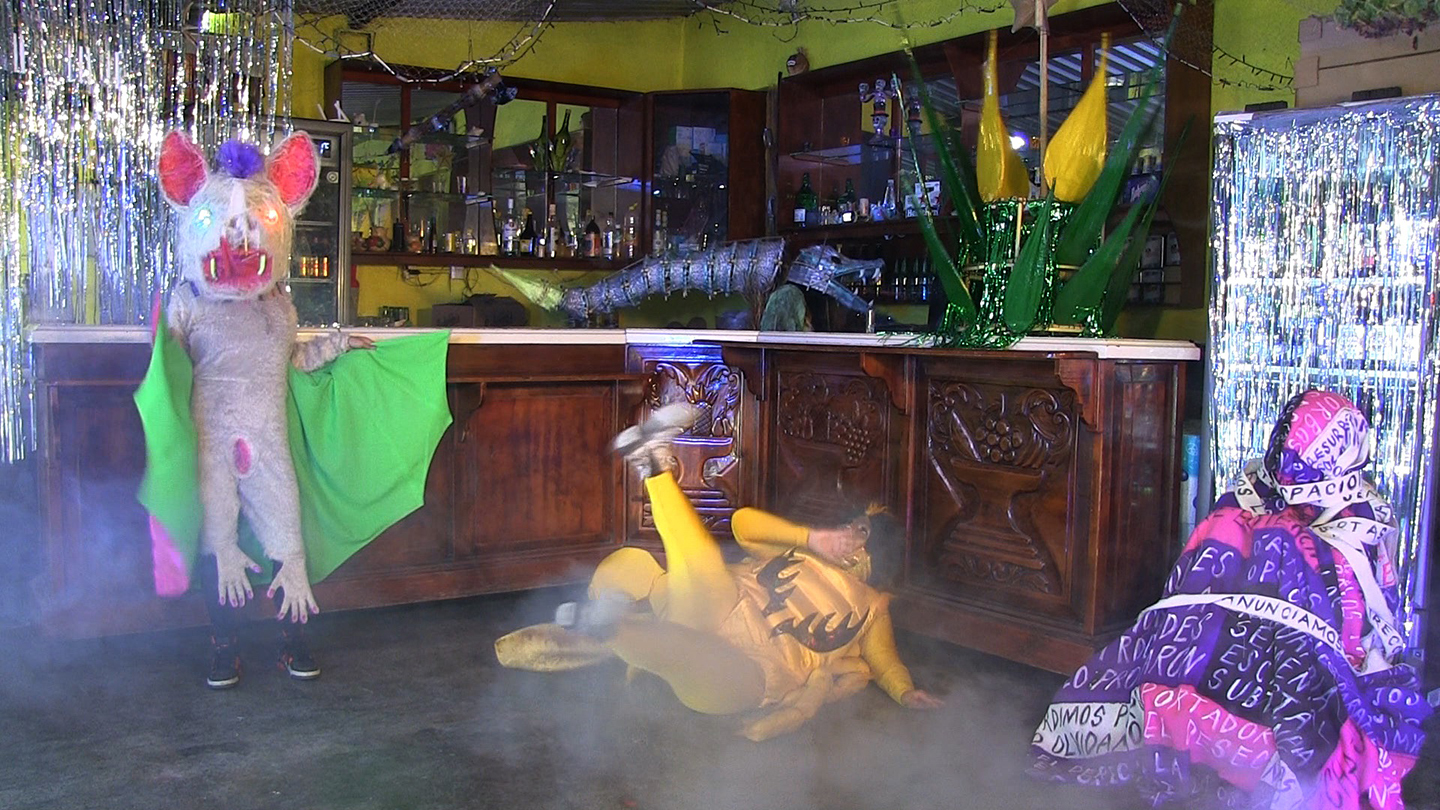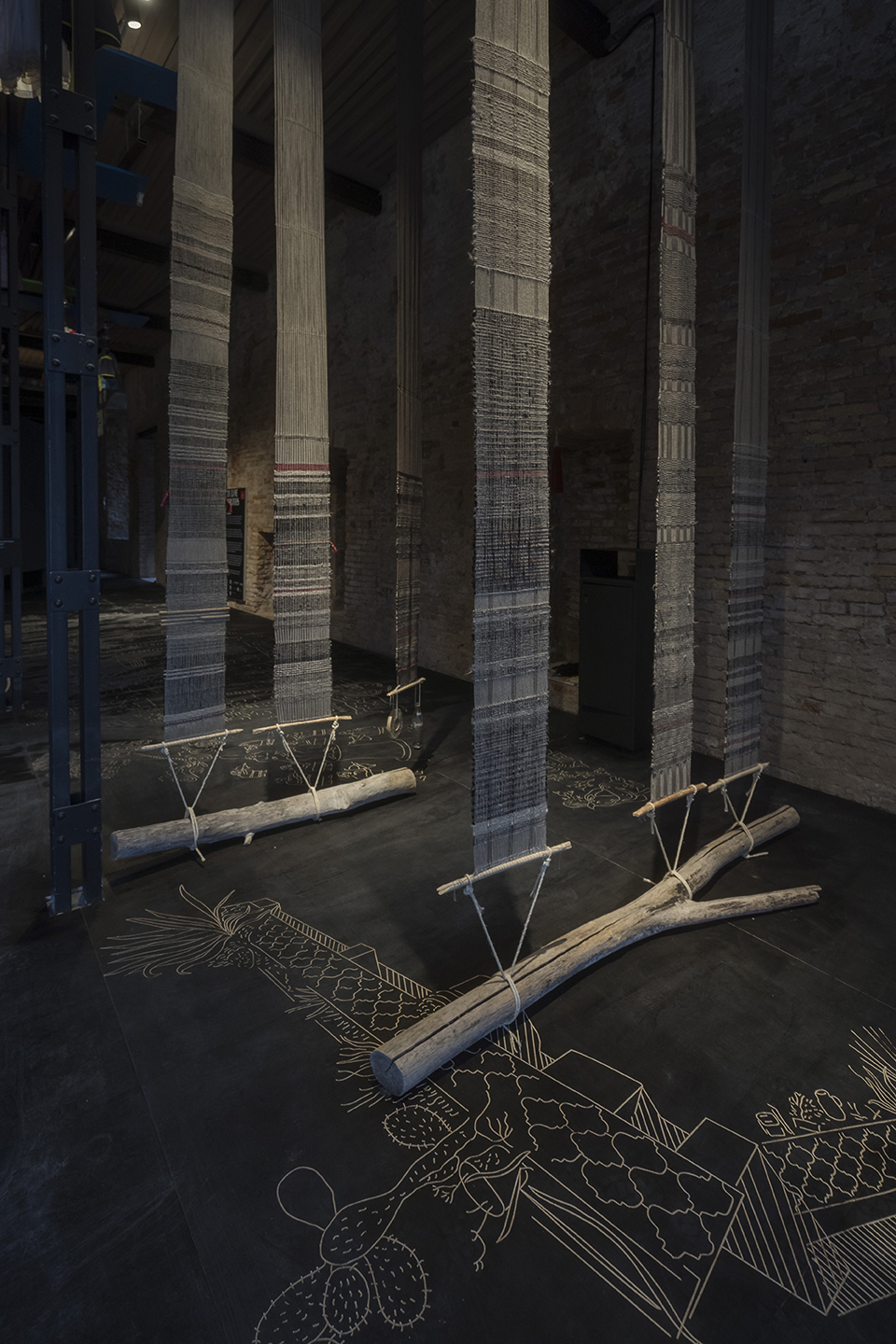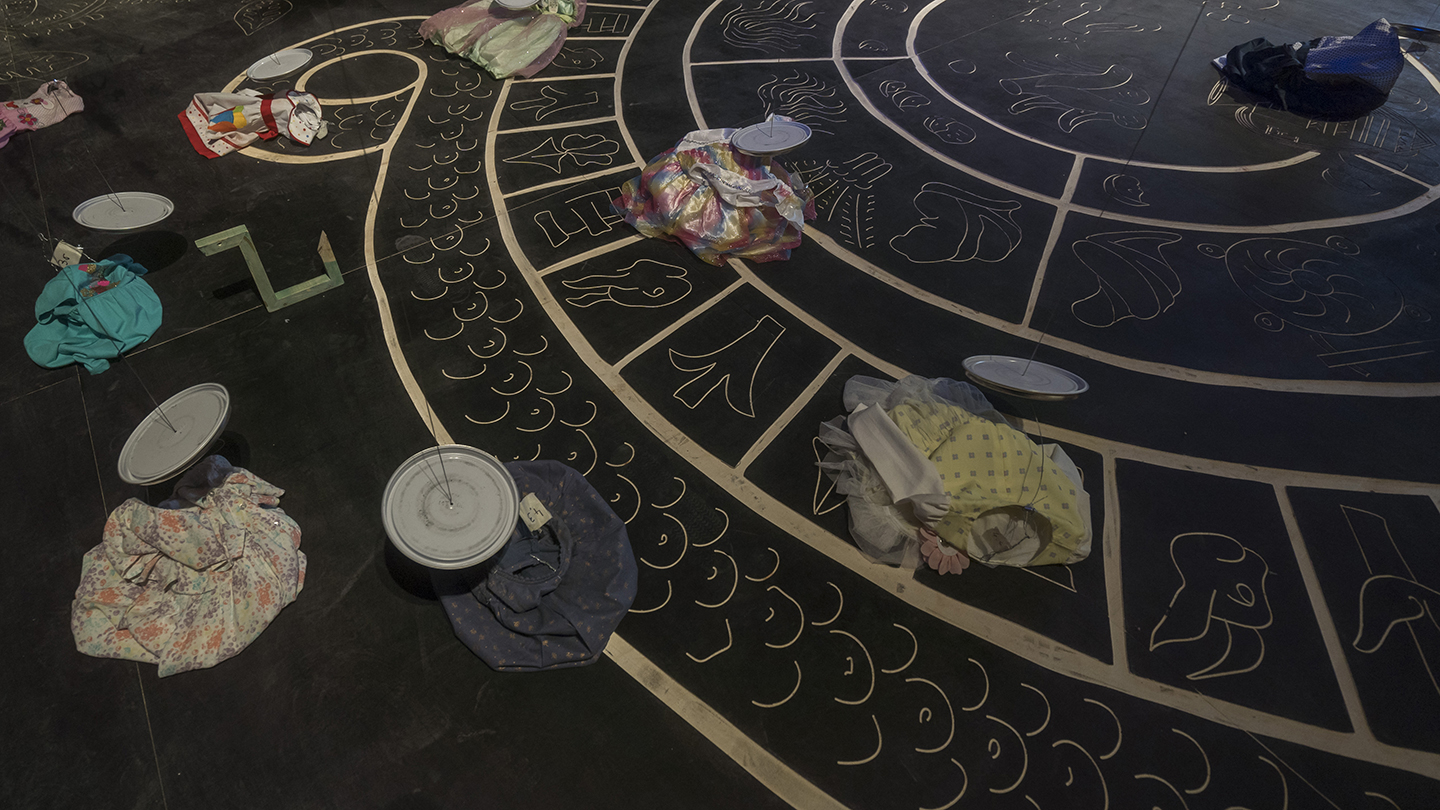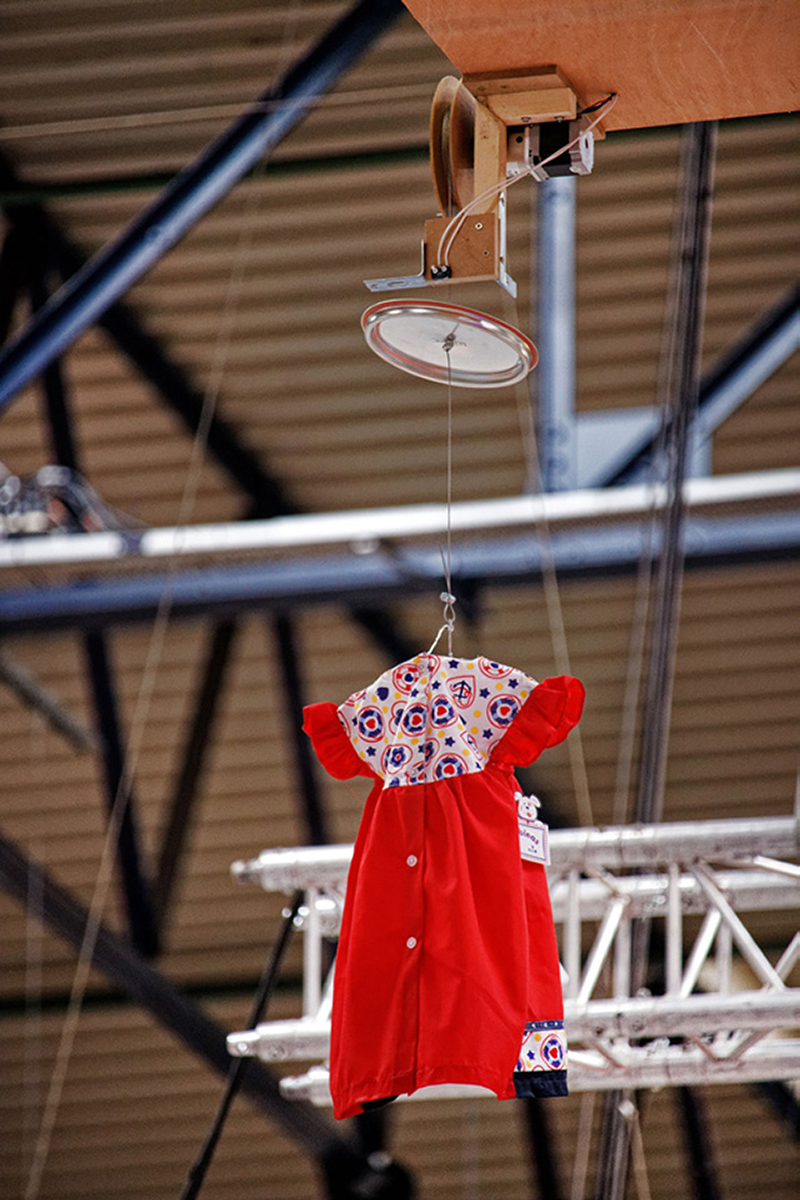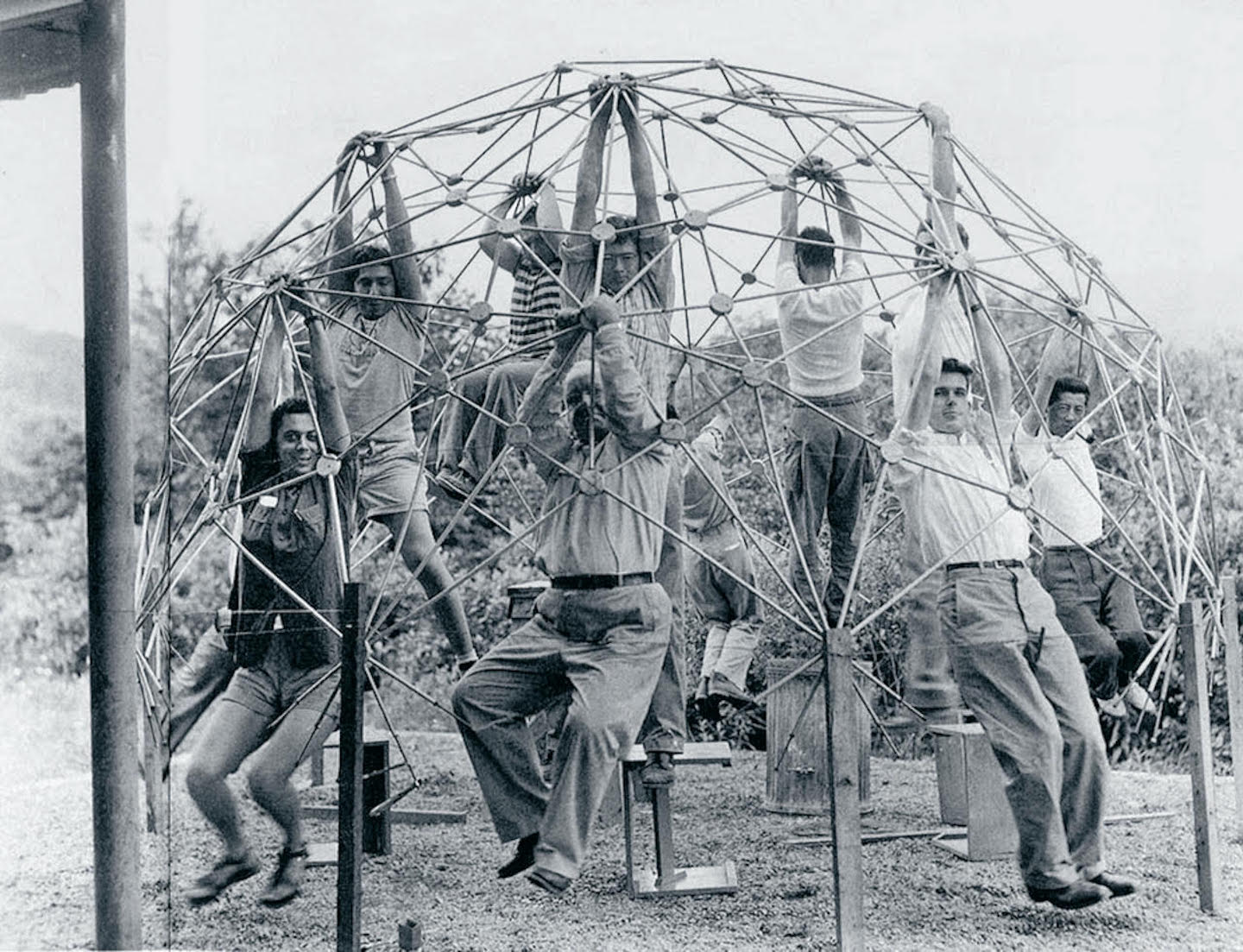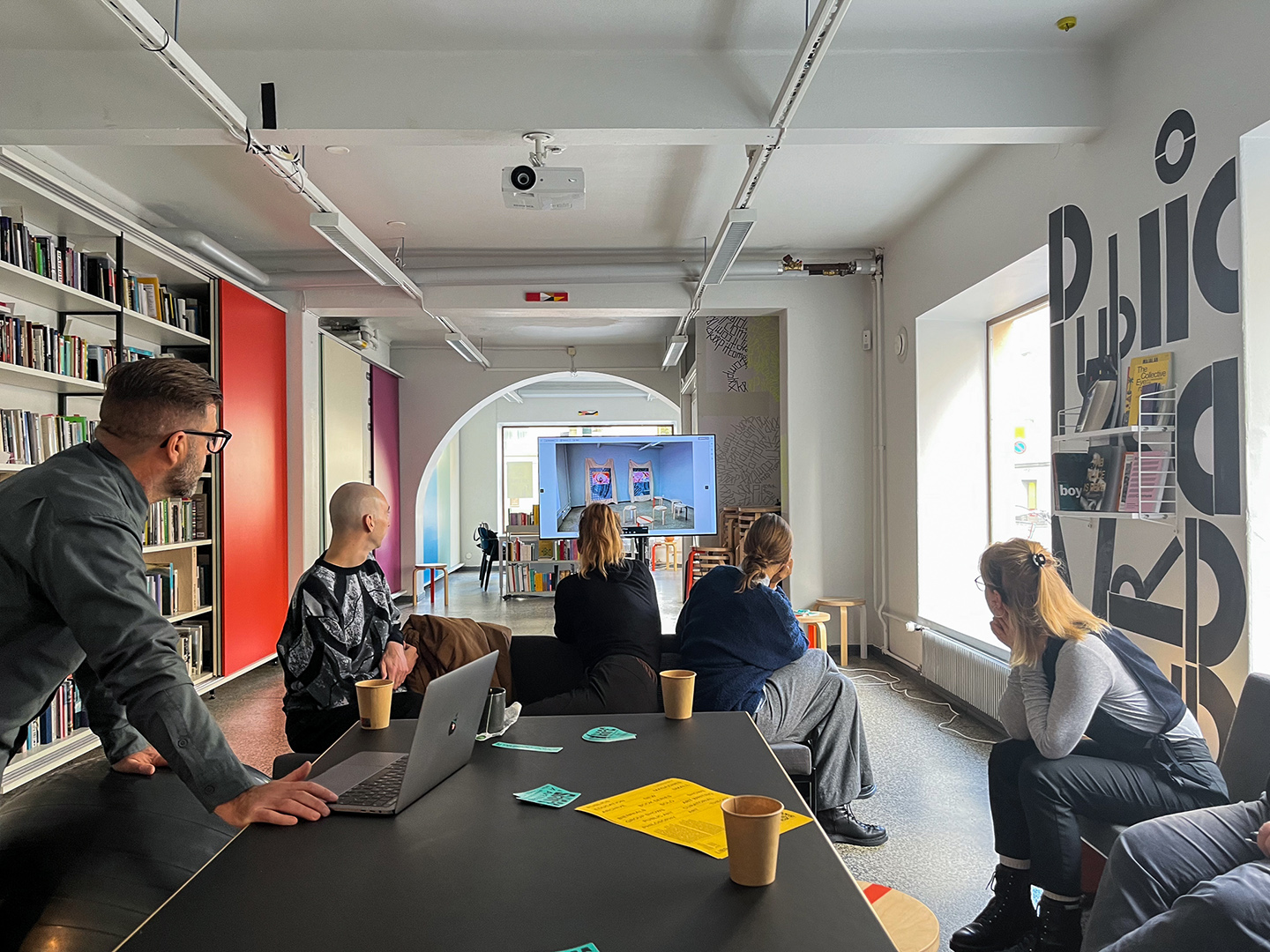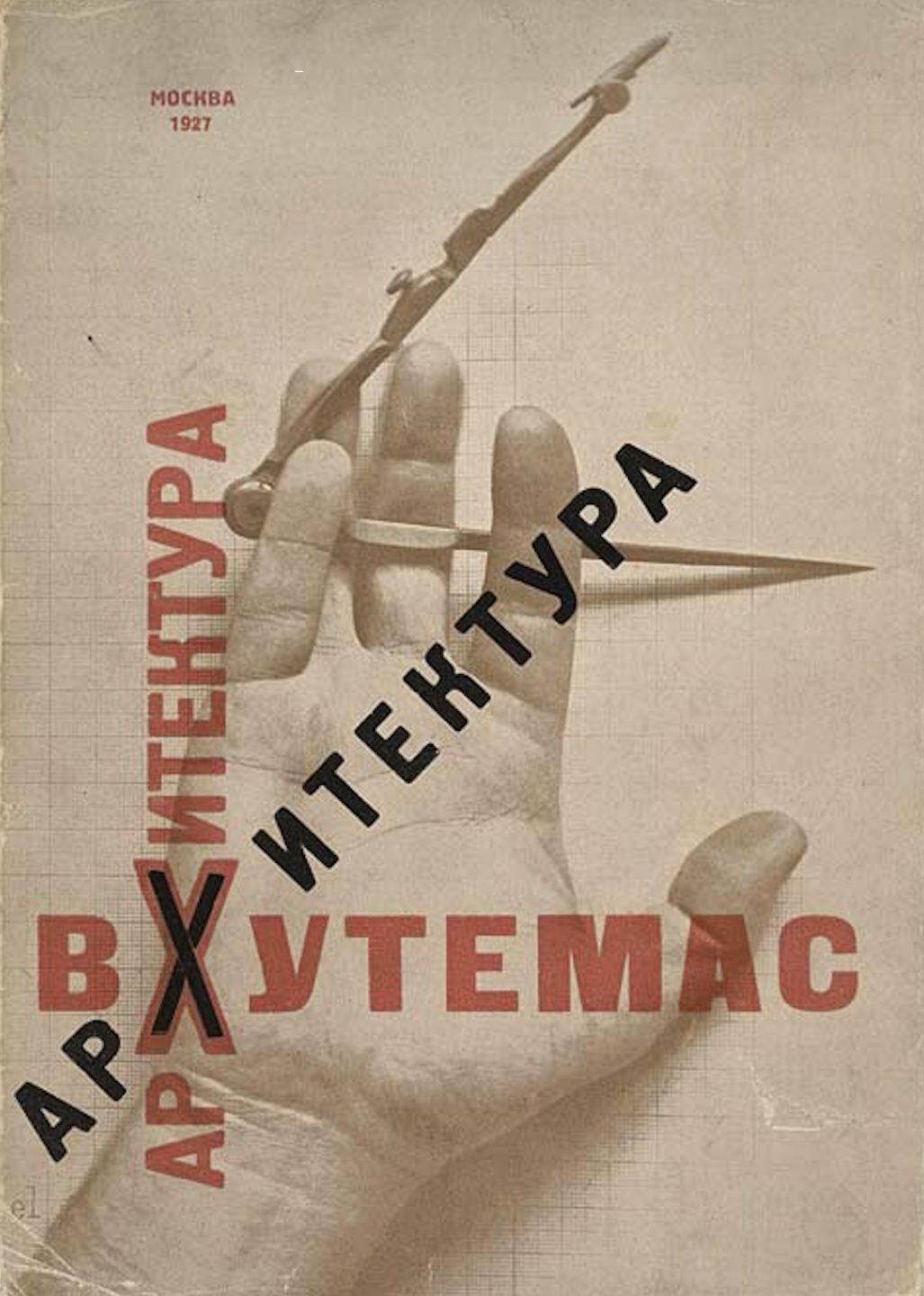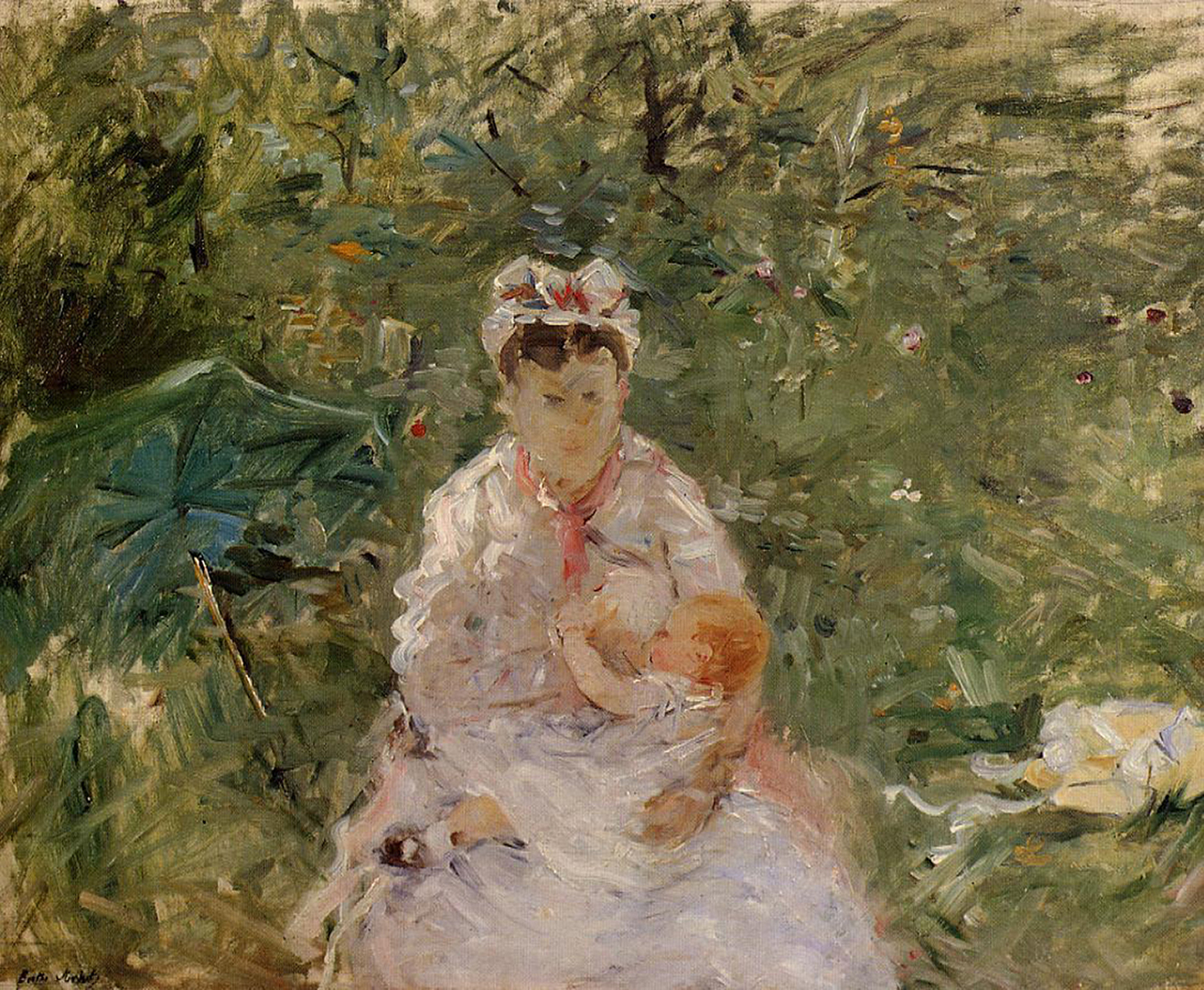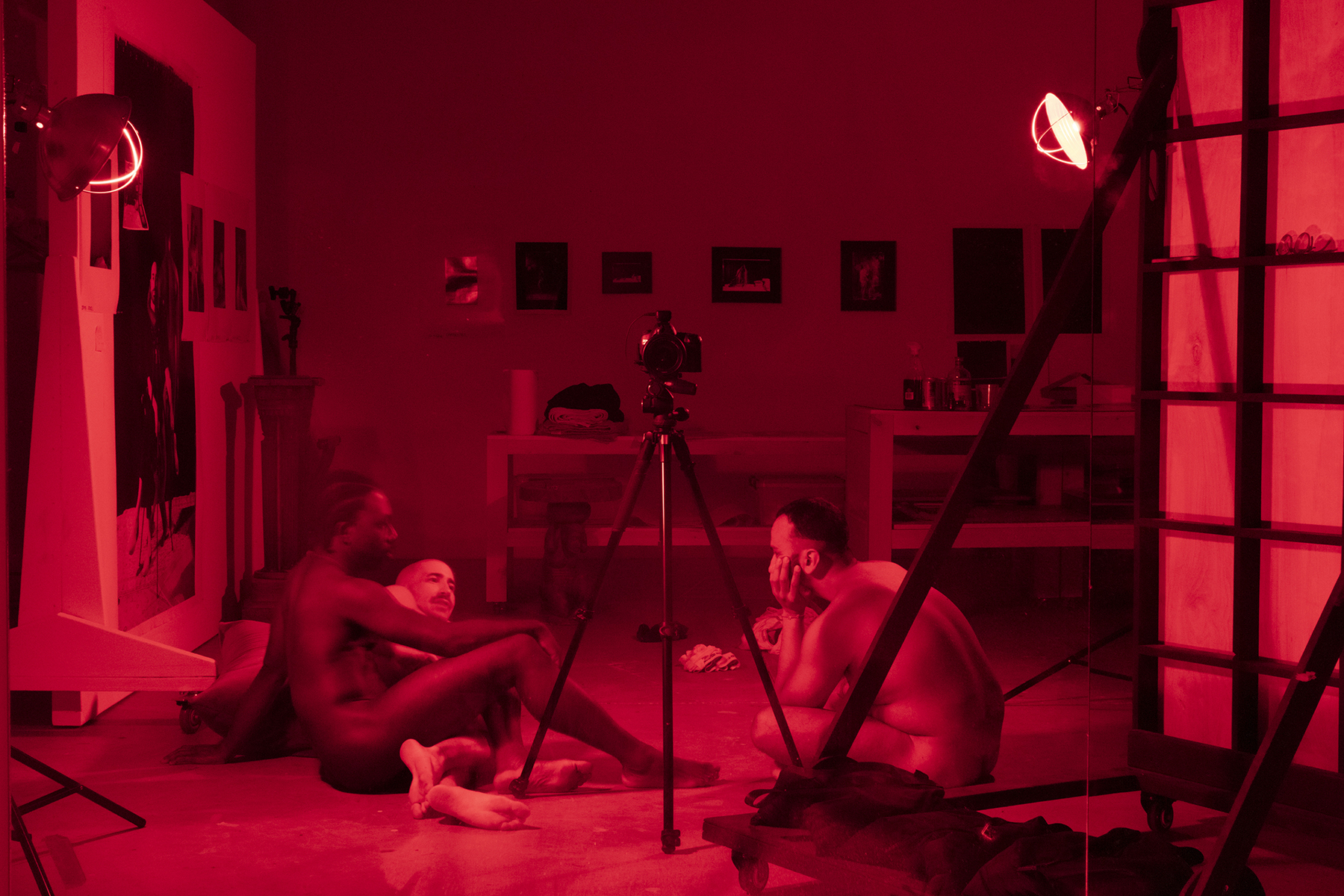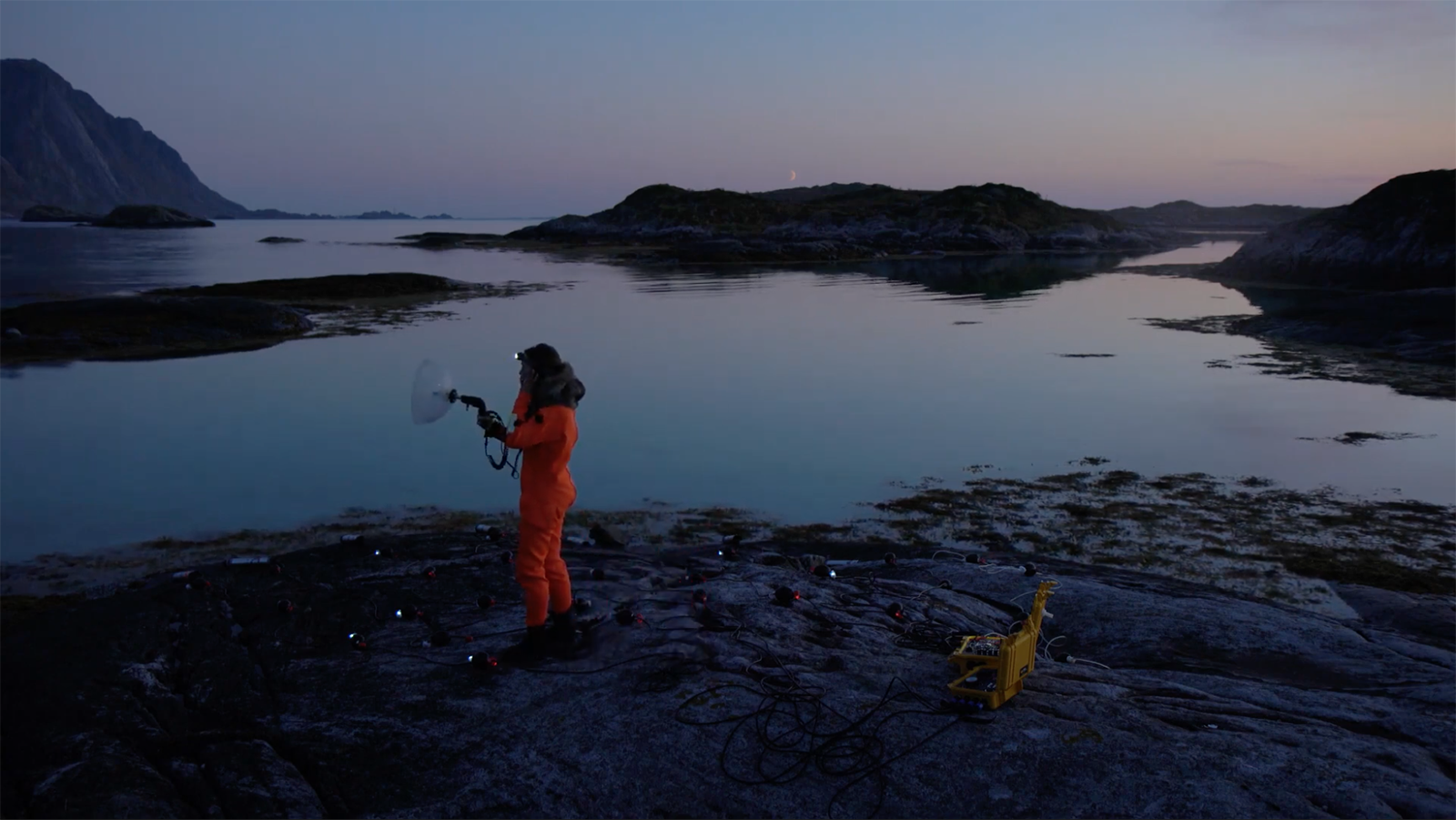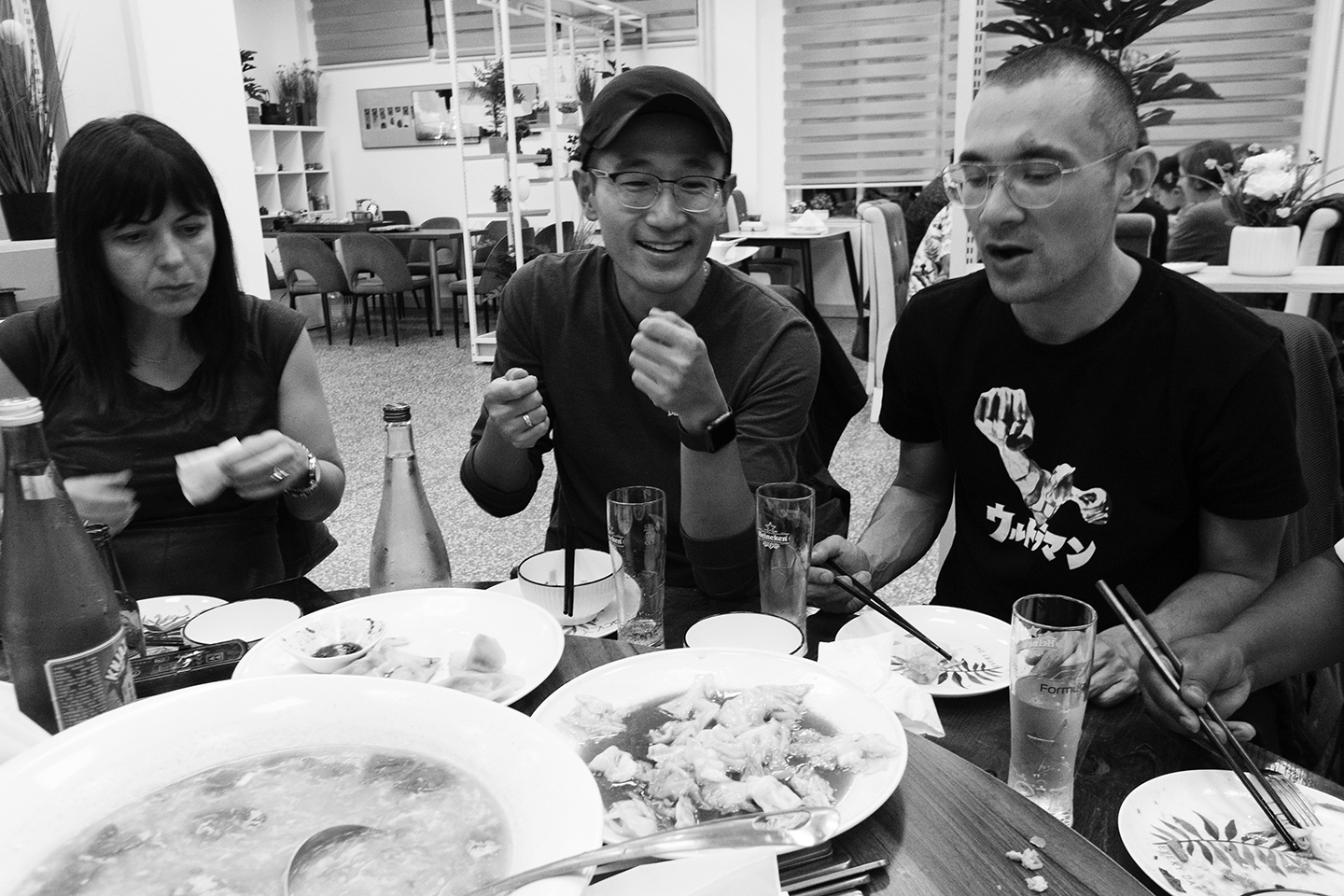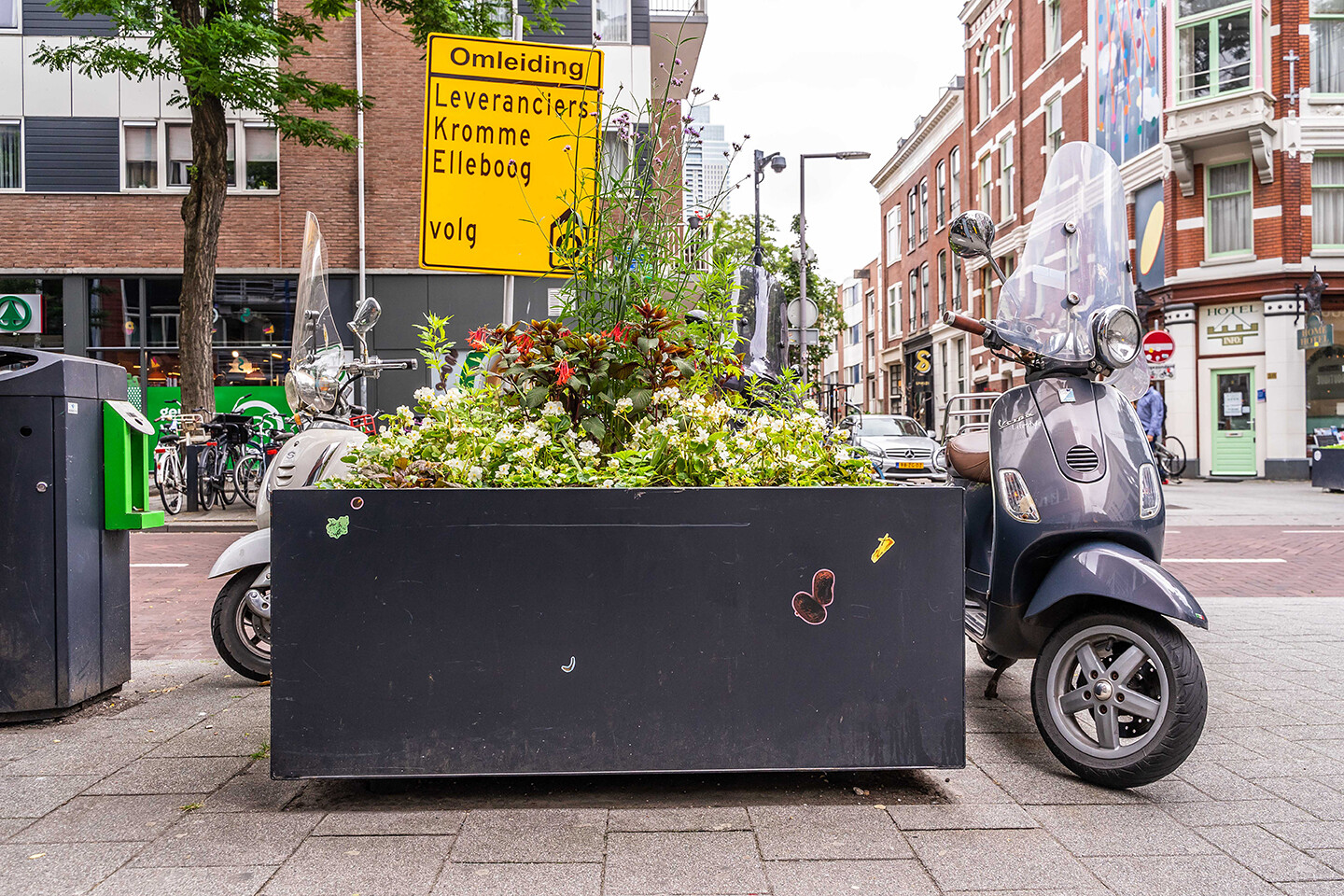Field Notes: “Until the Songs Spring,” Mexican Pavilion, 59th Venice Biennale
by Molly Everett
The Mexican Pavilion at the 59th Venice Biennale reveals itself in intersecting layers. Extending over the walls, floor, and ceiling, installations by four artists overlap and collide throughout the pavilion in the Arsenale. Rather than produce a totalizing effect, the exhibition encourages a pluralistic or even fragmented interpretation, one that engenders multiple associations. The presentation features works by Mariana Castillo Deball, Naomi Rincón Gallardo, Fernando Palma Rodríguez, and Santiago Borja (in collaboration with weavers of El Camino de los Altos). Titled “Hasta que los cantos broten” (“Until the Songs Spring”), the show takes its name from a poem by Temilotzin, a Tlatelolca leader who fought against the Spanish conquistadors, a reference to resistance and Mexico’s pre-Hispanic history that signals the range of worldviews and temporalities engaged in the pavilion. In distinct ways, the artists’ works interweave aspects of Mesoamerican cosmologies or practices to reveal colonial partitions of territory, time, and imagination, which continue to characterize contemporary conditions of identity, labor, resources, and globalization, all while envisioning alternative futures.
Mariana Castillo Deball’s large-scale drawing installation Calendar Fall Away (2022) spreads across the floor of the exhibition space. To create the work, the artist used a CNC-engraver to carve symbols sourced from pre-Hispanic civilizations and colonial Mexico into dark wood panels that cover the ground. Temporalities commingle and clash on the work’s surface. A European representation of a Mexica calendar wheel unravels as an enormous meandering snake encircles it. Castillo Deball’s imagery in this instance is likely drawn from a late seventeenth-century rendering by the Italian traveler Giovanni Francesco Gemelli Careri. (1) Although serpents appear at the margins of the Mexica sunstone, the one in Gemelli Careri’s seemingly derives from the Greek ouroboros, in which a snake swallows its own tail symbolizing eternity. The sinuous reptile in Castillo Deball’s engraving, however, does not complete the cannibalistic circle and instead unfurls, releasing the symbols—such as the head of a rabbit (tōchtli in Nahuatl) and house (calli)—from the circular calendar. Additionally, pieces of the mnemonic alphabet conceived by the sixteenth-century Tlaxcalan-Spanish friar Diego de Valadés are scattered over the horizontal sprawl. Melding both Roman letters and symbols from the Nahuatl, Purépecha, and Otomí lexicons, the composite logograms were used to convert and catechize natives. Among these mixed references to divergent systems of timekeeping and governing, Castillo Deball has included personal ones, such as the architectural features of her grandparents’ home. The artist’s gesture quite literally flattens hierarchies of various knowledge systems into an array that expands beneath the viewer’s feet, generating unexpected juxtapositions and fluctuating narratives that change with one’s path through the exhibition space.
Hovering above Castillo Deball’s design like specters are forty-three children’s dresses. The delicate, colorful clothes are part of the mechatronic installation Tetzahuitl (2019–22) by Fernando Palma Rodríguez. The vibrant blue and green grid from which the dresses hang evokes, on a much larger scale, the cross-brace of a marionette. Attached with cables to the structure in the ceiling and activated by motion sensors, the dresses move up and down, slowly descending, and then pulsate, only to be lifted suddenly and subsequently dropped, limp on the floor. On each of the wires above the garment are two circular metal lids—the tops of paint cans—which clamorously clank during the mechanical dance. The seemingly powerless small dresses float, gyrate, and tremble in their forced rhythm, subject to a never-ending cycle between floor and ceiling, earth and sky, evoking an inescapable albeit engineered violence. The name of the work, Tetzahuitl, comes from the Nahuatl language and references omens sent by gods of future events. In the fall of 2014, forty-three Ayotzinapa students “disappeared” in the state of Guerrero sparking demonstrations against governmental corruption and organized crime. This massacre is insinuated by Palma Rodríguez’s ghostly choreography, with its forty-three absent figures. For the artist, Tetzahuitl also forebodes against systemic brutality more broadly—from forced migration to femicide, which in turn, relate back to the historical tragedy of colonial invasion.
Filtering the light from the windows on the north side of the facade, twenty-three textiles are suspended from the rafters in Santiago Borja’s installation, Talel (2022). In collaboration with the artist, indigenous Tsotsil weavers who live in the highlands of Chiapas made the long, narrow tapestries on traditional backstrap looms and have integrated myriad personal objects—candles, clay rings, clothing fragments, glass bottles, wood logs, and prayers. Again, the number of elements here is significant, with twenty-three alluding to the chromosome pairs in the human genome. The title, Talel, variously translated from Tsotsil and Tseltal as “way of being,” “personality,” or “soul,” also refers to individual human nature and reflects the process through which each artisan developed particular methods for patterning the wool and natural fibers, imprinting unique yet subtle differences within a palette of earthy, subdued hues of gray, black, and scarlet. Coming from Chiapas, the handmade works speak to the specific legacy of resistance in the region, a site of contemporary local indigenous self-determination, and within the framework of the exhibition they resonate among the manifold and interspersed discourses.
At the opposite end of the space, in a darkened theater area that is enclosed yet open to the sounds of the exhibition, a video installation by Naomi Rincón Gallardo entices visitors with punchy songs. Sonnet of Vermin (2022) follows the travails of a campy cast of hybrid creatures originating in Oaxaca—Female Bat, Scorpion, Snake, Chorus of Frogs, and Mortuary Bundle—as they make their way through a dystopic world plagued by environmental ruin and societal collapse. Communicating by radio signals, the characters forge a community and across the airwaves they speak in unison, “Crawling sequined urban vermin, let’s twist our muddy disagreements together and speak for the shaking inside us.” With its imaginative and crafty DIY aesthetic, the speculative narrative does not trade playfulness for progressive politics and fuses various Mesoamerican myths with cuir/queer forms of resistance. From an underground chamber, Female Bat recalls: “There’s an omen about vermin foretelling delirious entangled re-existences.” Although the outcasts find solidarity, in the end, they must be sacrificed, and are eaten by an alligator. As the giant reptile consumes its victims, the camera cross-cuts to Female Bat fluttering its wings to reveal footage of refineries and industrial wastelands. Parts of the costumes and props in Rincón Gallardo’s video accompany the projection and animate the cave-like space. The alligator’s head breathes smoke from its jaws and its red eyes glow while a cacophony of sounds intermingle. Through this experimental counterworld, the artist addresses how colonialism continues to infect political, economic, and ecological realities, particularly through the narratives of those who exist outside of, or peripheral to, dominant hegemonies. The singing vermin are intermittently interrupted by the mechanical whirring and drumming of the installation by Palma Rodríguez nearby. Such intrusions rupture the notion of a singular cultural dialogue and jar the viewer into an awareness of multiple modes of understanding contemporary Mexico as they interact, resonate, and conflict in the exhibition.
“Hasta que los cantos broten” encourages entanglement, and the works resist a prescribed order and interact rhizomatically. Navigating the space is an experience of constant shifting, moving about and over a constellation of viewpoints and histories. Indeed, there are multiple paths through the hall where the staging of ways of seeing and territorializing the world in all its tensions and contradictions is palpable and the discomfort of one’s own situated knowledge is exposed. Displayed side-by-side, with each of their specific references, differing materialities, and myriad technologies, the works on view in the Mexican Pavilion speak to the heterogeneity of the regions, communities, and realities permeating the modern political framework of the nation-state and thus refuse any notion of a monoculture nor sense of categorical linearity, amalgamating past and future into a temporary, spatial scenery. Curators Catalina Lozano and Mauricio Marcin elucidate, “This complex coexistence of different ways of understanding a territory and the relationships that make it emerge, produces often violent conflicts. This, in turn, yields diverse forms of resistance that express the ambition of the Ejército Zapatista de Liberación Nacional to create a ‘world where many worlds fit’: the pluriverse.” (2) The exhibition, they continue, is “an effort to opening up to what becomes possible when ‘being with’ instead of just ‘being’, in order to shatter the naturalization of patriarchal forms of oppression expressed in violence, extractivism, and racism.”
On view in Venice—a city burdened with the material manifestations of its own imperial history and the environmental havoc of climate change and mass tourism—the rhizomic form of the exhibition situates geolocalities as mutually interconnected. This approach recognizes the resources of knowledge production in the North, which continually positions itself as the universal and invisible norm and the format of the show can be read as an attempt to reveal, and even dislodge, the systematic delocalizing of understanding and the logic of singularity. Walter Mignolo’s notion of “border thinking,” especially it’s hybridity as a “double critique,” is apt in that it connotes an ability “to think from both traditions and, at the same time, from neither of them.” (3) Despite such paradoxes inherent within the context of the Biennale and its brokering of soft politics, “Hasta que los cantos broten” is a potent reminder that knowledge is not monolithic, and the exhibition engages a cluster of narratives—however precarious—in a generative symbiosis to uncover new forms of resistance.
(1) It is probable that Gemelli Careri’s drawing borrowed from an earlier version from the mid sixteenth-century by Toribio da Benavente, known also as Motolinía. For more on this history of colonial European representations of the Mexica sunstone, see Anthony Aveni’s study, in which he argues that the circular paradigm in colonial depictions of Mesoamerican temporality is a forced overlay. Aveni, “Circling the Square: How the Conquest Altered the Shape of Time in Mesoamerica,” in Transactions of the American Philosophical Society 102, no. 5 (2012).
(2) Catalina Lozano and Mauricio Marcin, introduction to Hasta que los cantos broten, exhibition brochure (2022).
(3) Walter D. Mignolo, Local Histories/Global Designs: Coloniality, Subaltern Knowledges, and Border Thinking (Princeton, NJ: Princeton University Press, 2017), 67.
Molly Everett is a curator and writer based in Houston, Texas, where she currently serves as an assistant curator at the Moody Center for the Arts, Rice University. Previously, she’s held curatorial positions at the Menil Collection, the LUMA Foundation, Fondazione Sandretto Re Rebaudengo, and the Whitney Museum of American Art. She studied art history at the University of California, Berkeley, and Hunter College, City University of New York. Her research interests follow intersections of contemporary art, material and visual culture, gender and artistic labor, feminist historiographies and queer theory, and global exhibition practice and history.
